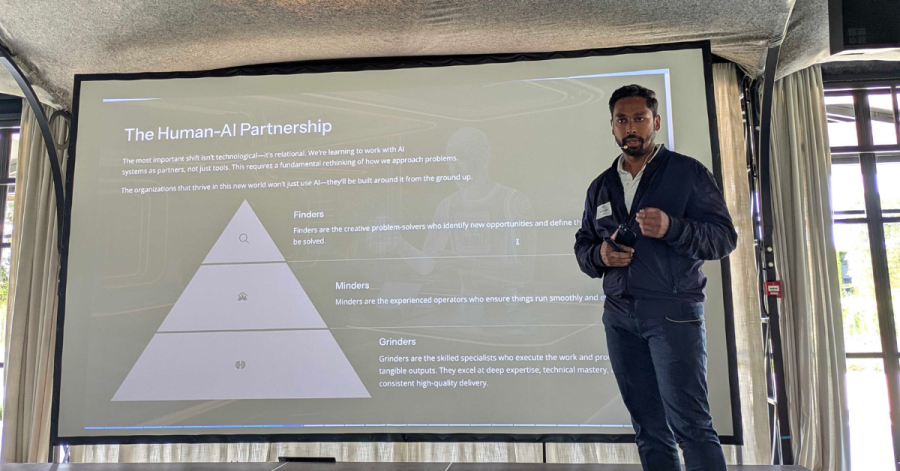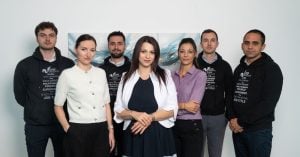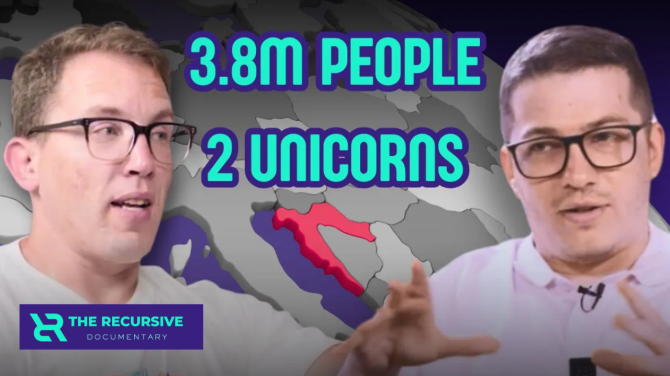During his keynote at the 3rd Hellen’s Rock Capital Founder Retreat, Sameen Jalal, CTO of Superbet and formerly an architect of engineering, AI and ML at Meta, Google and Wayve, laid out a grounded, experience-based view on what it takes for startups to move from AI experimentation to strategic integration.
“It’s not about the technology in this case. The technology has already come to terms to some extent, especially with open source. But it’s really about the organization,” he noted. “It requires leadership to come in and either role model the use case of AI, or it requires them to publicly say ‘we’re now an AI-first company. Like Duolingo and Shopify are doing.”
Jalal also argued that organizations often fall into the trap of experimenting with isolated tools without thinking systemically. In his view, AI capabilities should be built on shared infrastructure, allowing startups to compound value across functions rather than reinventing the wheel for every new use case.
How Roles Are Evolving in AI-Native Teams
Jalal introduced the “finders, minders, grinders” framework to explain how roles across startups evolve with AI. “The finders are kind of the people that are more or less discovering new workflows or new things to invest in.” But even as data multiplies, he warned, “you probably don’t want to leave that judgment to the machine learning today.”
For minders, AI shifts the role from oversight to process optimization: “Instead of now a manager managing a team of customer support folks, they are now focusing on whether the quality metrics are right or wrong, and what are the intervention points for this minder to then come in and improve the overall process.”
Meanwhile, grinders, the execution layer, must transform into orchestrators: “They become this conductor of AI capabilities. They’re not authors anymore, they’re more editors of the system that they’re building.”
Jalal made clear that automation without human control can backfire, citing Klarna’s layoffs: “They tried to automate away these jobs without maybe as many of the feedback loops as they probably could have spent to try to figure out whether the implications of AI could have resulted in negative customer service. They’ve publicly apologized now, moved back.”
Embedding AI Leadership and Culture
Beyond organizational charts, Jalal spoke to the cultural mindset needed to scale AI effectively. He described how AI is leveling access: “Some of the mom and pop shops who perhaps couldn’t afford the most expensive consulting support before are now getting access to the same level of guidance and mentorship that some of the best Fortune 500 companies are getting.”
Still, change doesn’t happen unless leaders set the pace: “First, it’s that cultural transformation that I mentioned before, where your company has this AI-native way of thinking. And again, it starts from the top, right? How do you make your entire leadership team the most fluent it possibly can be in AI, so you’re each AI nerds to some extent, and then it practically propagates across your organization.”
One way to do that, he suggested, is through structured learning frameworks: “Zapier is also going AI-first. Their literacy framework effectively looks at each function in the company from unacceptable, to capable, to adoptive, to transformative.” Jalal added, “Transformative is more, you know, you’ve now reinvented your job. It’s that grinder that basically moved themselves away from writing code to editorializing code.”
This transformation also needs financial planning. Jalal suggested that startups may need to create dedicated oversight bodies: “Something of an AI investment committee, if you will.” He added that “the return on investment on these AI initiatives may not be immediate.” He pointed to the cost of developer tools like Cursor: “In a company of several hundred people, this is on the order of millions of dollars you’re spending on Cursor without immediately getting an ROI. The best practices are not immediately felt. It’s a complete paradigm shift.”
Building with Foresight, Not FOMO
For founders and tech leaders eager to embed AI more deeply into their operations, Jalal urged pragmatism over speed. “You’re not gonna be able to see the immediate outputs to the maximum level in all use cases. It’s not gonna be turnkey.”
That makes infrastructure key. “Do you have a good data lake? Do you have good synthetics, semantic structuring of that data to make the best use of it? Do you have a system for retrieval, augmented generation?”
It’s not just about building fast – it’s about building with foresight.
“You do need to have some sort of a governance committee of sorts, or some way of verifying that you still have a human in the loop, or the feedback cycles you’re building around these machine learning models are going to give you the right results.”
To manage cost and risk, Jalal also suggested a measured, staged rollout: “How do you build those cohorts that are gonna be the most excited and engaged users of these AI tools to then spread best practices across the organization?”
In closing, Jalal left the audience with a challenge:
“It’s not a question of whether AI will transform the world. It’s a question of whether you’re gonna be on that train, while it’s taking off. What are you gonna build with it?”








